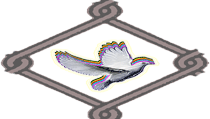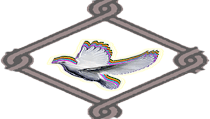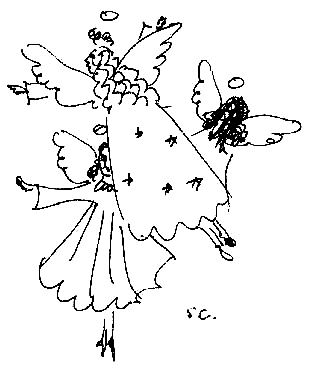Collective Communication, Inc with UNA-SF as its major partner has applied for a Google grant in the amount of $100 to $500k. See below for the text of the grant application. Our thesis is that our Gender / Generation Crosstalk will build morale for a social movement bringing together the NGO community beginning here in the Bay Area.
———————
What is the name of your organization? Collective Communication, inc.
I certify O
What is your organization’s Employer ID (EIN)? 95-3794897
What is your organization’s website URL? http://www.intermix.org/cci.htm
What is the address of your organization? 355 Serrano Dr Apt 4F
City San Francisco
State California
Zip Code 94132
In which county is your organization’s primary Bay Area office located? San Francisco
When was your organization founded? 1982
What is your organization’s mission? The mission of CCI is to fund research programs, surveys, and other projects to test the suitability of survey procedures as a means of communications between forums with a view toward improving communication between communities with different social and political backgrounds and to create a social atmosphere that is more beneficial to the various communities throughout the state of California.
How many full-time employees does your organization have? [N/A]
Who is the best person to contact at your organization? Roger Eaton
What is that person’s title at your organization? President
What is their contact email address? rogerweaton@gmail.com
What is their contact phone number? 415 933 0153
Have any Google staff, officers or directors (or to your knowledge, immediate family members thereof) been members of your organization’s board or officer group within the last 12 months? No
If Yes to the above question, explain here: [N/A]
Does your organization have any business dealings or ongoing negotiations with Google? No
If Yes to the above question, explain here: [N/A]
To your knowledge, are any current government officials, employees or civil servants employed by your organization or are they members of your organization’s board or officer group? No
If Yes to the above question, explain here: [N/A]
Annual operating expenses: 10000.0
2014 11000.0
2013 18000.0
Annual revenues: 10000.0
2014 11000.0
2013 17600.0
Total assets: [N/A]
2014 [N/A]
2013 [N/A]
Total liabilities: [N/A]
2014 [N/A]
2013 [N/A]
Which sector best describes your project? Community Development
If you selected “Other” in the previous question, please describe in the space below. [N/A]
Summarize your proposed project using this format: The [name of project] will address [major challenge] for [target beneficiaries]. Our [innovative idea] will provide [key problem-solving capability], unlike [current alternatives]. Over [time period], our project will [impact of project on major challenge].
The United Nations Association (UNA) Voices of Humanity Project will enable implementation of the UN Sustainable Development Goals (SDGs) for everyone in the Bay Area. Our one of a kind Gender / Generation Crosstalk open source technology will provide the sense of human solidarity that such an ambitious project requires. In three years we will have an active SDG network in the Bay Area with 5000+ active members. Over the next 15 years, our project will build a global as well as a local sense of heartfelt community. The Bay Area will have SDG success when the world does!
What phase is your proposed project in?
The project is in prototype stage for its software development and at the beginning stage of building a community of highly motivated users. The grant money will be used to develop both the prototype and the user community. We are moving ahead with a design for a mobile app for the project. The app design has been taken on by a General Assembly User Experience class. A team of students will develop a design for this app this summer. Then, the grant money will be used to code the app itself from the design. Also coming this summer are a geographic slider and hierarchical hashtags, which will help profile the members and their discussions by SDG and its targets. The concept is tested on web platform http://ugc.unasf.intermix.org. In September we expect to test the Crosstalk technology, which is our key innovation, with 100+ participants.
For the following set of questions, please be as specific as possible and, if you have them, use numbers to make your case. The more clear your answers are, the better we can imagine and evaluate your proposal.
A) On the technical side, hire Ruby-on-Rails programmer(s) to 1) Implement a phased roll-out of SDG facilities in the software: * hierarchical hashtags to reflect the three levels of the SDGs: goals, targets and indicators; * repository of hashtagged annotated resources; * a calendar, also hashtag accessible; 2) Implement android and iphone apps; 3) Implement “Make your gift work twice” feature where participants accumulate points that translate into dollars for eligible Bay Area NGOs of the participant’s choice; 4) Implement automated software testing; 5) Begin implementing internationalization; 6) Work down the existing list of desired improvements; 7) Begin designing next generation software.
B) On the community side, hire a combination publicist and outreach coordinator of unpaid interns to find and connect with Bay Area NGOs, companies and government agencies that want to track and encourage local SDG success. Also, hire part-time a fund-raiser.
If selected as a winner, how would your project utilize the $500k funding received? Provide a budget for how your organization would spend this amount.
Three year budget, $200k first year, $150k each of next two years: $45k – for part time project director 290k – for one full time and one part-time Ruby on Rails / app programmer 70k – part time publicist / intern coordinator for outreach 25k – part time fund raiser 35k – for office, meeting, event space and costs 20k – to fund the new “Make your gift work twice” Crosstalk feature 4k – for web server 5k – for email server 6k – for office supplies / postage / miscellaneous $500k total
There are 3 possible grant sizes. How would your project change if you received:
At the $250k level we should reduce the expectation of active members to 2500+ at the end of two years instead of 5000+ at the end of three years. Two year budget, $125k each of two years, split evenly across the board: $10k – for part time project director 155k – for two part-time Ruby on Rails / app programmers 40k – part time publicist / intern coordinator for outreach 10k – part time fund raiser 15k – for office, meeting, event space and costs 10k for “make your gift work twice” 2.5k – for web server
$100k?
At the 100k level we should reduce the expectation of active members to 1000+ at the end of two years instead of 5000+ at the end of three years. Two year budget, $67.5k first year, 32.5k second year: $5k – for part time project director $20k – for part time publicist / intern-coordinator 40k – for two part-time Ruby on Rails / app programmers the first year 10k – for one part-time Ruby on Rails / app programmer the second year 5k – part time fund raiser – first year only 7k – for office, meeting, event space and costs 5k for “make your gift work twice” 2.5k – for web server 3.5k – for email server 2k – for office supplies / postage / miscellaneous $100k total
What is the problem your proposed project aims to address? How big is the problem?
The NGO community is coming around to the belief that it needs much better cooperation across issues, but the structure of the community, with organization into legal entities that can hardly cope with their own issues has made that cooperation elusive, to say the least. It is a huge problem because the issues are entangled with each other in a chaotic web, so progress on just one or another of the issues is extremely difficult to achieve and maintain. The SDGs cover a wide spectrum that involves the greater part of the NGO community, so they offer a scaffold for cooperation, but the problem of disunity remains and if anything is even greater because the SDGs require global and national cooperation as well as local.
What is the expected impact of this project if successful?
The Crosstalk technology marries a social media experience targeted at individuals with a cyclical bottom-up collective experience where each lunar month the participants write and select messages to represent basic demographics of humanity: women, men, youth, middle-aged, seniors, humanity-as-one, indigenous, other minority, with breakout also by nation, by group and hierarchical hashtag and with a local to global slider. Love, wit and spirit are what we all appreciate, so messages selected in the Crosstalk process are reliably generous, intelligent and lively. Read the top rated (as of July 21, 2015) message in the Crosstalk here: ugc.unasf.intermix.org/items/1827/view. Sharing such messages on a monthly basis will build the sense of solidarity the SDG community will need. If it works as intended, the Crosstalk will build morale and unite the Bay Area NGO community in a movement for the local, national and global implementation of all of the Sustainable Development Goals.
What are the 1-3 key indicators you will use to track progress toward the impact you described above? How will you measure these indicators?
There are two indicators. First the number of active Bay Area participants in the Crosstalk who mark their profile with an interest in the SDGs. Second, the amount of donations that are circulated via the “Make your gift work twice” feature of the software. The software will track these numbers with breakout by gender, age, metro region, nationality, etc.
What geographic region does your project impact?
Foremost, the project will impact the San Francisco Bay Area. By implementing a scaffold for sustainability networking, the Bay Area SDG community will grow and solidify to include corporations and governments as well as NGOs. Such an SDG community in the Bay Area will both move towards implementing the SDGs locally, and will reach out at the state, national and global levels to encourage and join with the larger movement towards SDG implementation.
What other organizations are tackling this issue and what approaches have been tried in the past?
The UN is itself putting together a Sustainable Development Fund (sdgfund.org). At the global level you have to work top down, so we may expect great interest from the SDG Fund in the SDG Crosstalk as a bottom-up partner. The Fuji Declaration group is looking to build a similar movement. “The mission of the Fuji Declaration is to ignite the full potential of the human spirit in service to humanity and the web of life.” (fujideclaration.org) This mission mirrors the goal of the Voices of Humanity project. Again, our Crosstalk technology will be of interest to the many sponsors of the Fuji Declaration as a bottom-up partner.
What’s the core insight or innovation that differentiates this project from others? How is the proposed answer significantly better than what currently exists?
The Voices of Humanity project adds a cyclical collective communication process to more standard social media. It enables groups to select messages that represent the groups, and then gives the process a rhythm, so that each lunar month, new messages are chosen. Participants will be able to write “candidate” messages in response to the winners of the previous month, resulting in a conversation between the groups capped by the voice of humanity-as-one. Sharing the winning messages from the previous round will create a collective consciousness. Since the shared messages will always be kind, intelligent and spirited, the participants will come to see humanity in a new, more positive light, encouraging them to work together to solve humanity’s problems locally, nationally and globally. As far as we know, there are no other social media projects that are quite this ambitious in their undertaking for positive social change.
How will your project scale beyond what you’ve proposed here?
Locally we can hope that the SDG network will take off on its own. That is, while still using and supporting the Voices of Humanity Crosstalk software, the Bay Area SDG network will organize itself, find its own leadership, and remake Bay Area society so we are much more able to implement the SDGs. Also locally, we can hope that other networks, such as Rotary, or women’s groups will use the process to strengthen their sense of community, and that new networks, as between high-schools across jurisdictions, will arise, giving students and others a positive additional dimension to their lives. If we do well locally, the process is likely to go national and global quickly.
What are the 2-3 most significant risks you foresee in this project? How has your team planned to address them?
The greatest risk is that there is not enough individual benefit for participants, so that even though the collective benefit looks worthwhile, participation feels like a civic duty at best. To address this, we will have a “make your gift work twice” crowd-funding initiative, where donations are used to reward active participants, not for themselves but for participating Bay Area nonprofits of their choice. This should help us enlist non-profits, who would then motivate their own membership to participate. A second big risk is that the software will not hold up to the increased load that we are looking for. 1) We must put the Ruby-on-Rails automated software testing in place. And 2) we need to raise funds for more programmers so we can a) locate and fix bottlenecks and b) begin work on the next generation of the software.
Who is the core project team? What makes them poised for success?
The core team consists of Roger Eaton, long time project leader, and Flemming Funch, programmer of the software. Flemming is highly experienced with Ruby on Rails and many other programming tools. Roger has programming experience and Bay Area outreach experience with connections via the United Nations Association and other local nonprofits that support the goals of the UN, including several women’s groups. The plan is to hire a second Ruby programmer, a PR / outreach person and a fund-raiser and add one or two unpaid interns as possible. The core team of two has shown great persistence, but it is the design of the software that gives us a real chance of success. We are finally at the point where the basic design is working. People are looking for a way to integrate across the silos. The Crosstalk technology is worth a try!
Who do you consider your 3 most significant partners (e.g., funders or others that have worked with your organization) from the past 3 years? If none, list none.
The 501(c)(3) California nonprofit, Collective Communication, Inc. has funded the software development to this point. Outreach has been largely through our major partner, UNA San Francisco, also a 501(c)(3) nonprofit with offices in Marin. UNA-USA, the national UNA organization has expressed interest in the project by way of a communications award to UNA San Francisco for the project and help with a Thunderclap.
Please include links to up to 3 articles or publications related to your work.
ugc.unasf.intermix.org – this is the public face of the project
github.com/VoicesOfHumanity/InterMix – open source repository for the project
voicesofhumanity.org/a-new-intermix-feature-is-on-its-way-gender-crosstalk – the theory behind the project
Anything else we should know? [N/A]
How did you hear about the Challenge? via the web, but cannot recall exactly
Terms and Conditions: By submitting an application, I certify on behalf of my organization that: 1) The organization agrees to be contacted by Google for purposes of carrying out the Challenge, 2) The organization agrees to the Challenge Rules, 3) All information contained in this application is true and accurate, 4) That the organization meets the eligibility requirements specified in the Challenge Rules, and 5) That none of the information in this application is confidential or proprietary. O
I would like to receive updates on future Google Impact Challenges and other Google charitable initiatives. O



